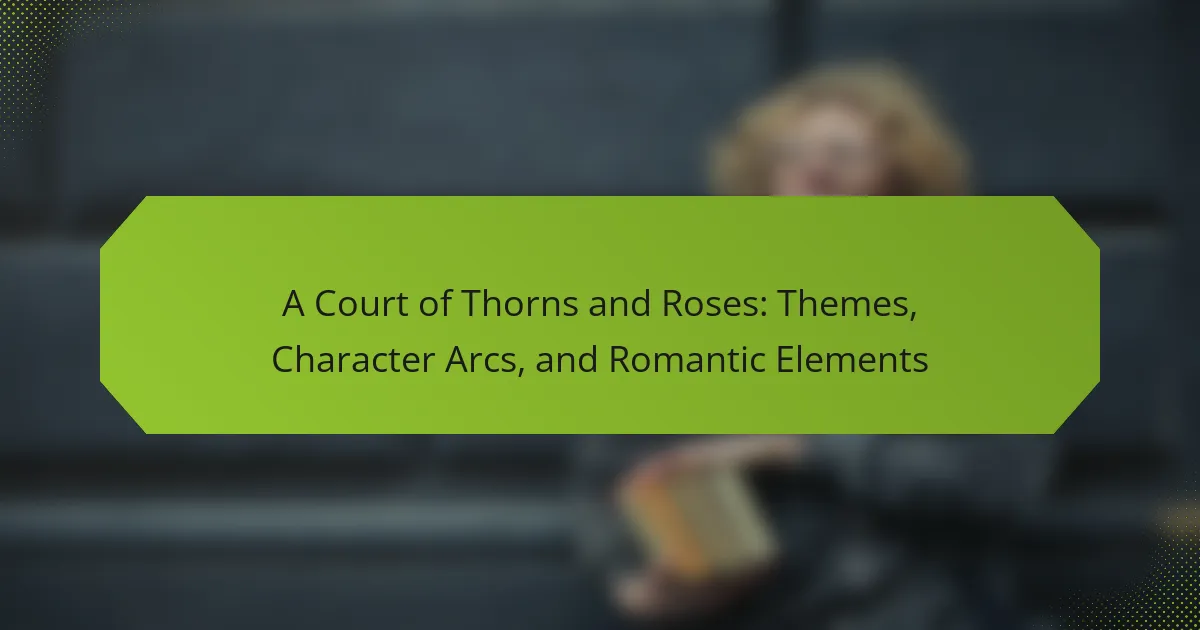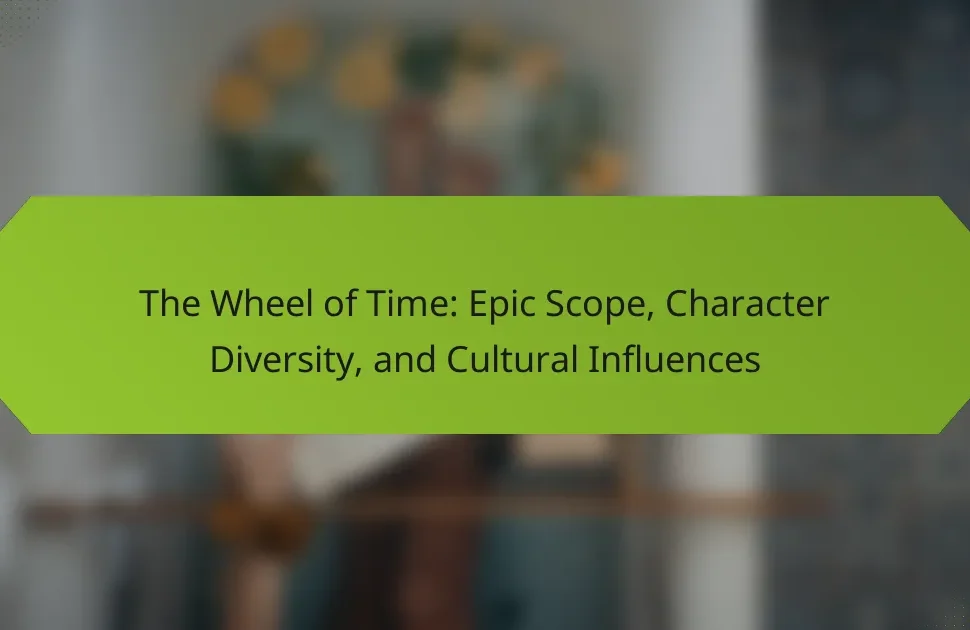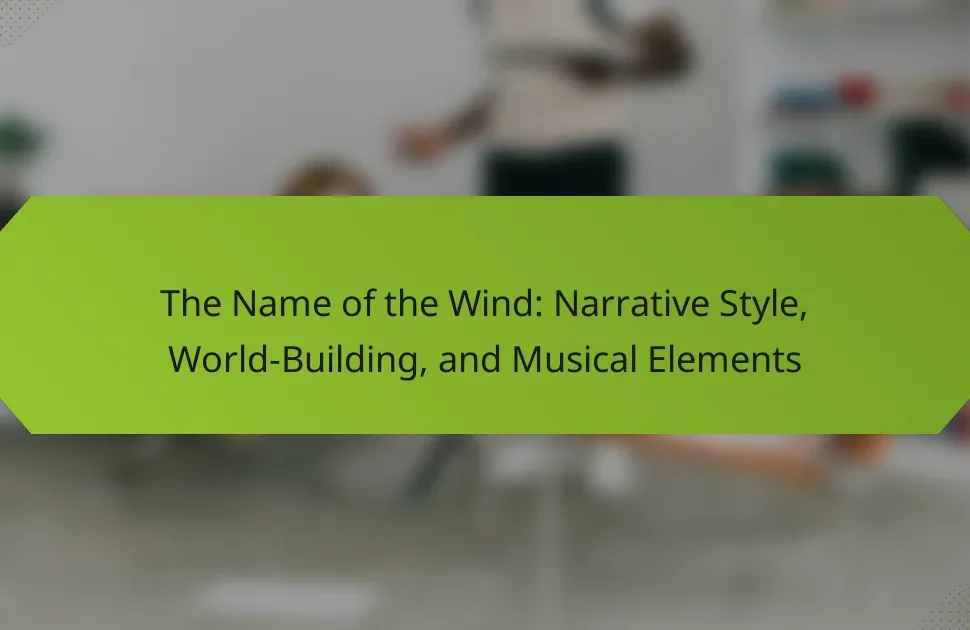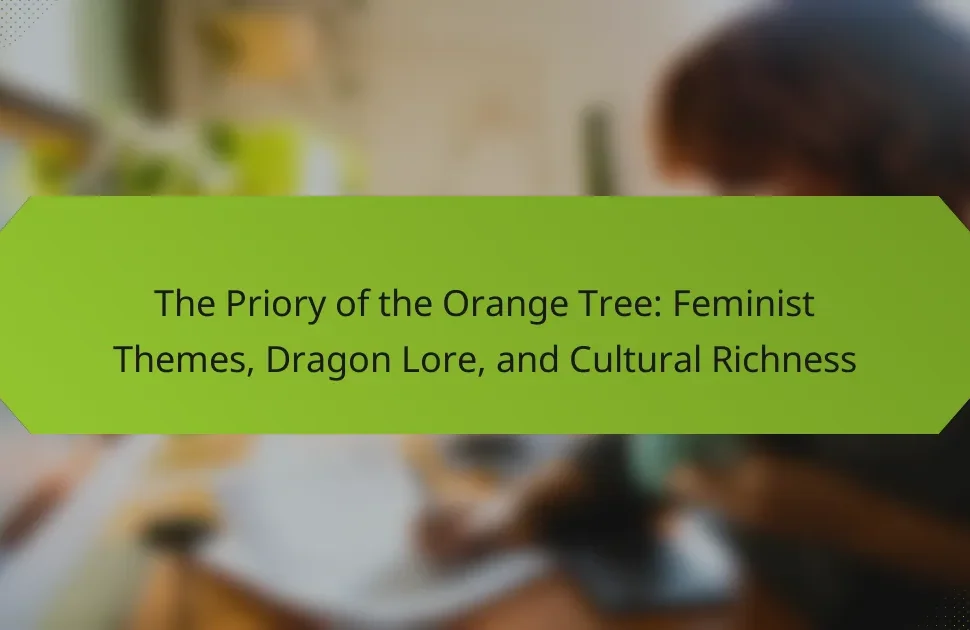Explore the intricate themes, character arcs, and romantic elements in A Court of Thorns and Roses. This fantasy series delves into love, sacrifice, and personal growth. It features significant transformations of key characters like Feyre, Tamlin, and Rhysand. The evolving relationships highlight the complexities of loyalty and emotional connections within a richly imagined world.
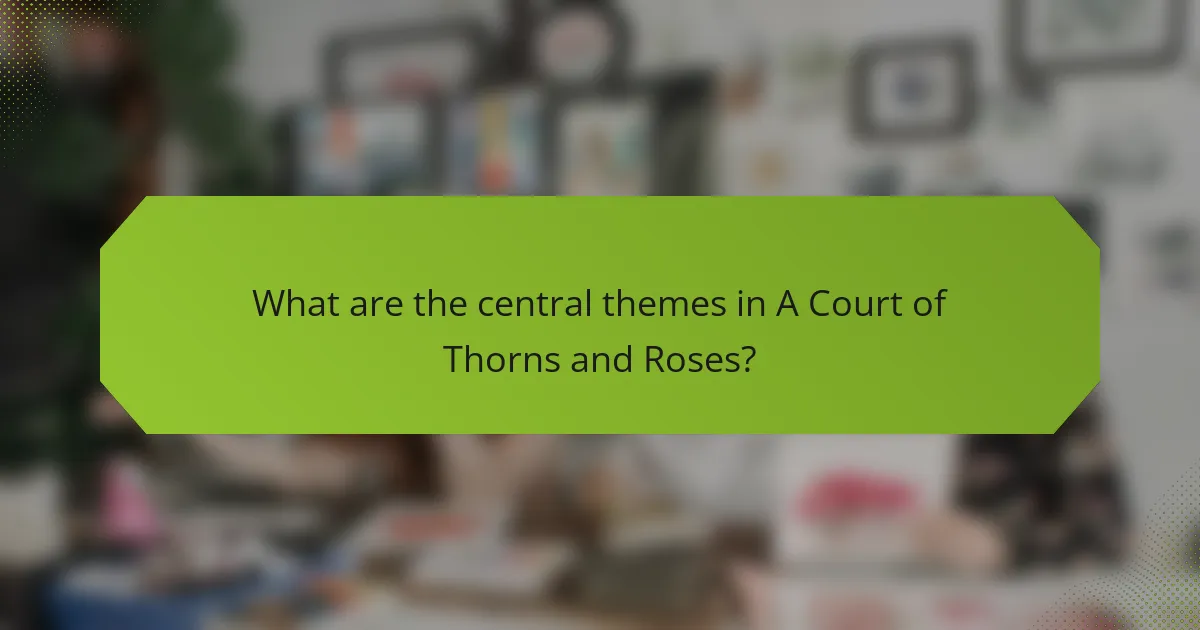
What are the central themes in A Court of Thorns and Roses?
The central themes in A Court of Thorns and Roses include love, sacrifice, and personal growth. Love drives character relationships and conflicts, while sacrifice highlights the characters’ struggles and choices. Personal growth is evident in the protagonist’s transformation throughout the story. Themes of power dynamics and societal structures also play significant roles, showcasing the impact of class and privilege. The interplay of light and darkness further emphasizes the moral complexities faced by the characters.
How does the theme of love manifest in the story?
The theme of love in “A Court of Thorns and Roses” manifests through complex relationships and transformative experiences. Love drives character development, particularly in the evolving bond between Feyre and Tamlin. This relationship showcases love’s ability to inspire courage and sacrifice. Additionally, the narrative explores different forms of love, including familial and platonic connections, highlighting their significance in personal growth. The portrayal of love as both a source of strength and vulnerability adds depth to the story’s emotional landscape.
What role does sacrifice play in character development?
Sacrifice is crucial for character development in “A Court of Thorns and Roses.” It propels characters toward growth, revealing their true selves. For instance, Feyre’s sacrifices for her loved ones illustrate her transformation from a self-centered individual to a selfless hero. This evolution deepens emotional connections with readers and highlights themes of love and resilience. Sacrifice often acts as a catalyst for pivotal character arcs, showcasing how personal losses can lead to empowerment and renewed purpose.
How does the concept of power influence the narrative?
Power significantly shapes the narrative in “A Court of Thorns and Roses.” The dynamics of power influence character relationships, drive conflicts, and establish thematic depth. Characters like Feyre navigate complex power structures, revealing their motivations and growth. The exploration of power dynamics highlights themes of control, sacrifice, and resilience, enriching the romantic elements and character arcs throughout the story.
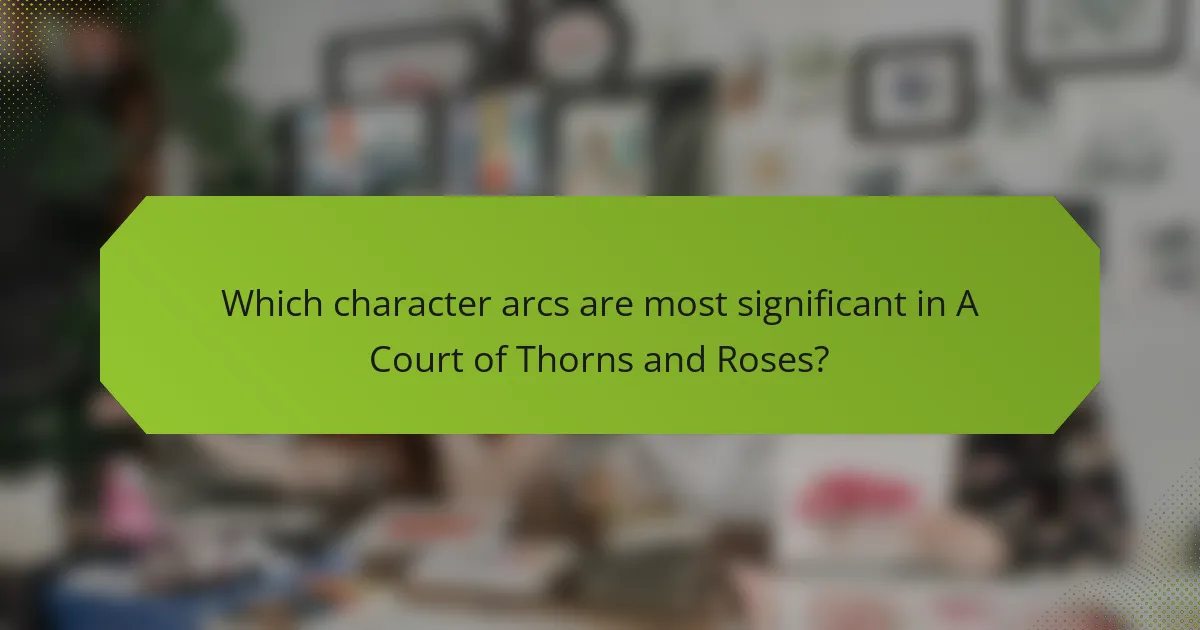
Which character arcs are most significant in A Court of Thorns and Roses?
The most significant character arcs in A Court of Thorns and Roses involve Feyre’s transformation, Tamlin’s struggle with vulnerability, and Rhysand’s journey of redemption. Feyre evolves from a mortal hunter to a powerful High Fae, embodying themes of sacrifice and growth. Tamlin grapples with his protective instincts and emotional barriers, reflecting the challenges of love and responsibility. Rhysand’s arc showcases his shift from an antagonist to a complex ally, revealing depth and the importance of trust. These arcs intertwine, enhancing the narrative’s exploration of personal change and relationships.
How does Feyre’s journey illustrate personal growth?
Feyre’s journey illustrates personal growth through her transformation from a vulnerable mortal to a powerful figure. Initially, she embodies fear and survival instincts, but as she faces challenges, she develops resilience and empathy. This growth is marked by her evolving relationships, particularly with Tamlin and Rhysand, which shape her understanding of love and sacrifice. Feyre’s experiences highlight the importance of self-discovery and courage in overcoming adversity. Ultimately, her journey reflects a profound inner strength and the ability to embrace her identity and responsibilities.
What transformations do supporting characters undergo?
Supporting characters in “A Court of Thorns and Roses” undergo significant transformations that enhance the narrative. These characters often evolve from secondary roles into pivotal figures, reflecting themes of growth, loyalty, and sacrifice. For instance, characters like Lucien and Nesta experience profound personal journeys that impact their relationships and the overarching plot. Their development illustrates the unique attribute of complexity, enriching the story’s emotional depth. Ultimately, these transformations serve to highlight the interconnectedness of characters and the themes of redemption and resilience.
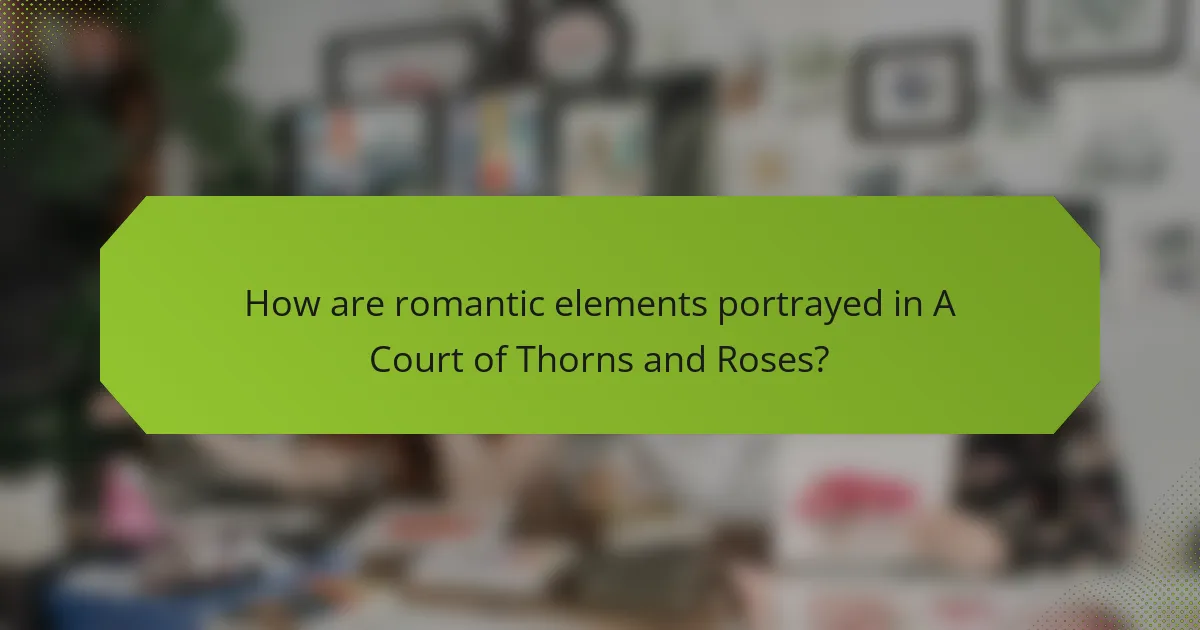
How are romantic elements portrayed in A Court of Thorns and Roses?
Romantic elements in A Court of Thorns and Roses are intricately woven into character relationships and plot development. The evolving romance between Feyre and Tamlin showcases themes of love, sacrifice, and transformation. Their connection deepens as they face external threats, highlighting the interplay between vulnerability and strength. Additionally, the romantic tension with Rhysand introduces complexities that challenge Feyre’s understanding of love and loyalty. This dynamic enhances the narrative, making the romantic elements pivotal to character growth and thematic exploration.
What makes the romance between Feyre and Tamlin compelling?
The romance between Feyre and Tamlin is compelling due to their intense emotional connection and transformative journey. Their relationship evolves amid external conflicts, showcasing themes of sacrifice and personal growth. Feyre’s struggle for identity and autonomy contrasts with Tamlin’s protective nature, creating tension. This dynamic allows readers to engage deeply with their vulnerabilities and desires. The unique blend of fantasy elements and relatable emotions enhances the story’s allure, making their romance resonate on multiple levels.
How does the relationship between Feyre and Rhysand evolve?
Feyre and Rhysand’s relationship evolves from distrust to profound love and partnership. Initially, Feyre sees Rhysand as an antagonist, representing her fears. As they navigate challenges, mutual respect grows, revealing Rhysand’s true character. Their bond deepens through shared experiences and sacrifices, culminating in a strong alliance. This transformation highlights themes of redemption and understanding, showcasing how love can flourish amidst adversity.
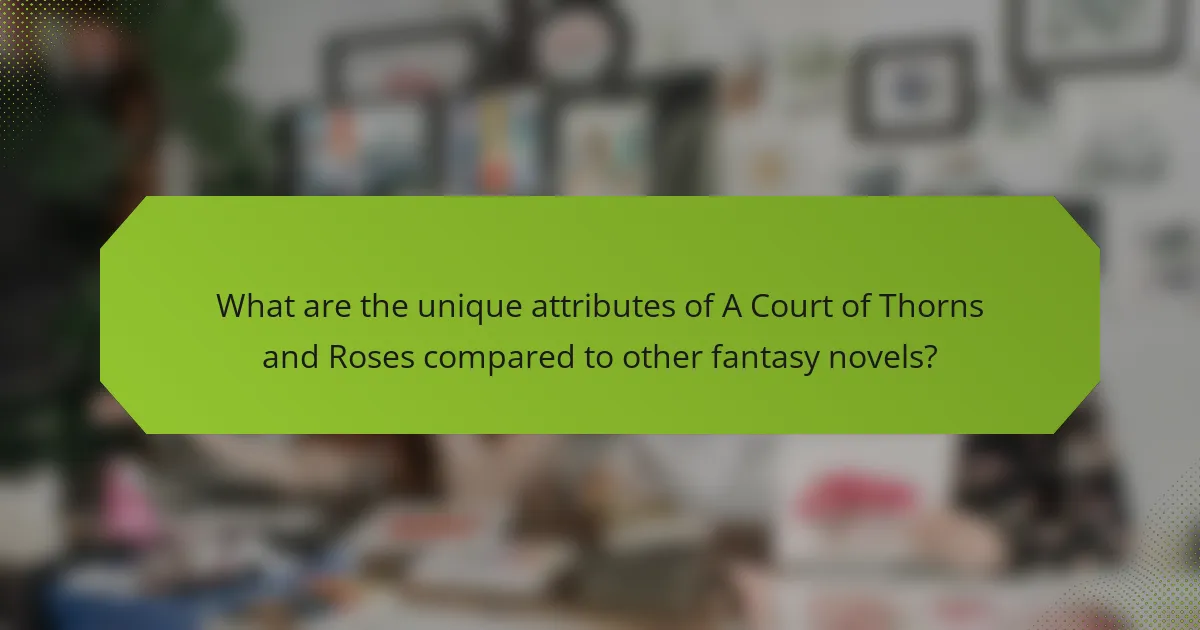
What are the unique attributes of A Court of Thorns and Roses compared to other fantasy novels?
A Court of Thorns and Roses stands out among fantasy novels due to its intricate blend of romance, character development, and mature themes. The series uniquely intertwines fairy tale elements with darker, adult-oriented narratives.
The protagonist, Feyre Archeron, undergoes significant transformation, showcasing a unique character arc that emphasizes personal growth through adversity. This depth of character is often less pronounced in typical fantasy narratives.
Romantic elements are central to the plot, distinguishing it from other fantasy works that may prioritize action or adventure over emotional connections. The exploration of complex relationships adds layers to the story, enhancing reader engagement.
Additionally, the series incorporates rich world-building that combines traditional fantasy tropes with innovative twists. This unique attribute enriches the reading experience and sets it apart in the crowded fantasy genre.
How does the blending of romance and fantasy set it apart?
The blending of romance and fantasy in “A Court of Thorns and Roses” creates a unique narrative experience. This combination enhances emotional depth and character development, allowing readers to connect with the protagonists on multiple levels. The romantic elements intertwine with fantastical settings, creating a rich backdrop for the story. As a result, the stakes of love and conflict are heightened, making the narrative compelling and immersive. The interplay of these genres sets the work apart from traditional fantasy, offering a fresh perspective on relationships within an enchanting world.
What narrative techniques contribute to its distinct storytelling?
A Court of Thorns and Roses employs rich narrative techniques that enhance its storytelling. The use of first-person perspective allows readers to deeply connect with the protagonist’s emotions and experiences. Vivid imagery creates immersive settings, drawing readers into the fantastical world. Symbolism enriches themes, such as the significance of thorns representing pain and growth. Additionally, nonlinear timelines add complexity, revealing character arcs through flashbacks and foreshadowing. These techniques collectively contribute to the novel’s distinct and engaging narrative style.

How does the setting impact the themes and character arcs?
The setting profoundly impacts the themes and character arcs in “A Court of Thorns and Roses.” The contrasting realms of the human and faerie worlds shape characters’ motivations and growth. For instance, the oppressive nature of Prythian drives Feyre’s transformation from a vulnerable human to a powerful figure. Additionally, the lush, dangerous landscapes emphasize themes of survival and love. The setting serves as a catalyst for character development, highlighting their struggles and triumphs against the backdrop of a richly imagined world.
What significance does the Spring Court hold in the story?
The Spring Court plays a pivotal role in “A Court of Thorns and Roses” as a symbol of renewal and beauty. It embodies themes of growth, transformation, and the complexities of relationships. The court’s vibrant nature contrasts with darker elements in the story, highlighting character arcs that evolve through love and conflict. Additionally, the Spring Court’s unique attributes, such as its seasonal magic, influence the narrative’s romantic elements and character dynamics.
How do the different courts reflect character dynamics?
Different courts in “A Court of Thorns and Roses” embody distinct character dynamics through their hierarchies and interpersonal relationships. Each court reflects unique values that shape character arcs, influencing their growth and romantic connections. The Night Court, for example, emphasizes freedom and loyalty, fostering deep bonds among its members. In contrast, the Spring Court represents tradition and control, often stifling individual expression. These contrasting environments allow characters to navigate their identities and relationships, ultimately driving the narrative forward. The interplay between court dynamics and character development creates a rich tapestry of themes, enhancing the story’s emotional depth.

What are common interpretations of the themes across different cultures?
Common interpretations of themes in “A Court of Thorns and Roses” vary across cultures but often center on love, sacrifice, and transformation. These themes resonate universally, reflecting the human experience. For example, the theme of love transcends cultural boundaries, showcasing both romantic and familial bonds. Sacrifice often highlights the lengths characters go to protect those they care about, a concept valued in many societies. Transformation, particularly personal growth, resonates as individuals confront challenges, embodying resilience and hope. These interpretations reveal shared values and emotional connections that unite diverse cultures.
How do readers from various backgrounds perceive the theme of sacrifice?
Readers from various backgrounds perceive the theme of sacrifice in “A Court of Thorns and Roses” through distinct lenses shaped by their experiences. Cultural contexts influence interpretations, with some readers emphasizing personal loss while others focus on communal or familial sacrifice. Individual experiences, such as facing adversity or loss, can amplify the emotional resonance of sacrifice portrayed in the narrative.
For example, readers from collectivist cultures may relate more to the sacrifices made for family or community, finding deeper meaning in the protagonist’s choices. In contrast, those from individualistic backgrounds might focus on personal agency and the sacrifices necessary for self-actualization. These varied perspectives enrich discussions around the theme, highlighting how sacrifice serves as a pivotal element in character development and plot progression, ultimately enhancing the story’s emotional depth.
What cultural influences shape the understanding of love in the narrative?
Cultural influences such as folklore, societal norms, and historical context shape the understanding of love in “A Court of Thorns and Roses.” The narrative reflects diverse cultural perceptions, emphasizing themes of sacrifice and loyalty. For instance, the portrayal of love often intertwines with duty, reflecting traditional values. Additionally, the characters’ experiences resonate with cultural myths, enhancing their emotional journeys. These elements create a rich tapestry that informs the reader’s interpretation of love within the story.

What practical insights can readers gain from A Court of Thorns and Roses?
Readers can gain insights into personal growth and resilience from “A Court of Thorns and Roses.” The themes highlight the importance of overcoming adversity. Character arcs, particularly Feyre’s transformation, illustrate the journey from vulnerability to strength. Romantic elements emphasize the complexities of love, showcasing both passion and sacrifice. These insights encourage reflection on one’s own challenges and relationships.
What lessons about resilience can be learned from Feyre’s journey?
Feyre’s journey teaches that resilience stems from facing adversity and embracing personal growth. Her struggles against overwhelming odds highlight the importance of perseverance. Each challenge she overcomes reinforces her strength and adaptability. Moreover, her evolving relationships illustrate that support systems can bolster resilience. Ultimately, Feyre’s story emphasizes that resilience is forged through trials, self-discovery, and the courage to change.
How can the exploration of power dynamics inform personal relationships?
Exploring power dynamics enhances personal relationships by revealing how control and vulnerability shape connections. In “A Court of Thorns and Roses,” themes of dominance and submission illustrate these dynamics. Characters like Feyre and Tamlin navigate their power imbalances, influencing their emotional growth. This exploration fosters empathy and understanding, essential for relationship development. Understanding these dynamics can lead to healthier interactions and deeper connections.
